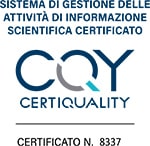

Name
CALCIOBASE*
The only calcium-citrate in a stick
-
- Gluten free
- Lactose free
- Sugar free
30 10 ml sticks of 500 mg calcium citrate each €15.80
*patented composition
What it is
Calciobase is a calcium-based food supplement with sweetener. The. The calcium in Calciobase is in the form of calcium citrate, which represents a bioavailable organic form of this important mineral.
Why calcium is important
Calcium is a mineral involved in many of your organs’ functions and is mainly stored in the bone tissue, where it is used for the preservation of it’s anatomical structure, and in the muscle tissue, where it guarantees its regular contracting function.
Why take Calciobase
Although the best way to maintain calcium levels within normal range is through a balanced and adequate diet, you may not always be getting the right calcium intake from your food: when that happens, Calciobase can help you boost your daily dietary calcium intake
How much calcium do we need on a daily basis?
According to the S.I.N.U. guidelines (Italian Society of Human Nutrition), the recommended intake level for the Italian population (PRI) for calcium stands on average at 1000 mg per day, a value that increases in adolescence, when the body is still growing, and in age advanced.
LARN –Reference values for the Italian population
 Source: Italian Society of Human Nutrition – SINU, 2014
Source: Italian Society of Human Nutrition – SINU, 2014
 Source: Italian Society of Human Nutrition – SINU, 2014
Source: Italian Society of Human Nutrition – SINU, 2014 Who is Calciobase for
What it looks like
Calciobase is a white cherry-flavoured solution, packaged in a pre-dosed slim pocketsize stick packs.
How to take Calciobase
The contents of the Calciobase stick must be poured directly into the mouth.
How much Calciobase to take
Take 1 or 2 stick packs per day, based on need. Do not exceed the suggested dose. Before using Calciobase for other purposes than those listed herein, consult your physician. Calciobase is formulated in 10 ml sticks, containing 500 mg of calcium, to facilitate use. So, for example, if you needed to take 1000 mg of calcium a day, you would take two 500 mg stick packs per day at different times of the day. This increases the absorption of calcium, as daily dosage is broken down in several administrations throughout the day (3,4).
*NRVs = Nutrient Reference Values (adults) according to Regulation (EU) No 1169/2011


When to take Calciobase
How to store Calciobase
Store Calciobase in a cool and dry space kept away from direct light or exposure to heat. The expiration date on the stick packs refers to the unopened stick pack stored appropriately without tampering. Do not dispose of in the environment after use.
What’s inside Calciobase
Calciobase is composed by the following ingredients: water, calcium citrate, stabilizer: xanthan gum; acidity regulator: lactic acid; preservative: potassium sorbate; flavouring, sweetner: sucralose. Calciobase does not contain sugar, gluten, or lactose.
Warnings
WARNINGS: Food supplements are not intended as a substitute for a varied and balanced diet and a healthy lifestyle. Keep out of reach of children under 3 years. Do not exceed the recommended daily dose. Store in a cool and dry place at room temperature. Avoid exposure to light and direct sources of heat.
- Wilczynski C et al. Curr Osteoporos Rep 2014; 12: 396–402
- Iolascon G. et al J Nutr Health Aging 2017; 21: 527-538
- Heaney RP, et al J.Bone Miner Res1990; 5: 1135-1138
- Heaney et al J.Bone Miner Res. 2000; 15: 2291
- Hunt JN et al. Dig Dis Sci 1983; 28: 417-421
- Straub DA Nutr Clin Prac 2007; 22: 286-296






